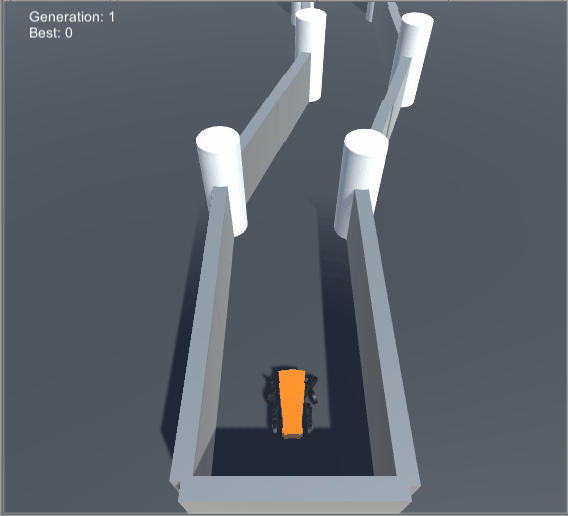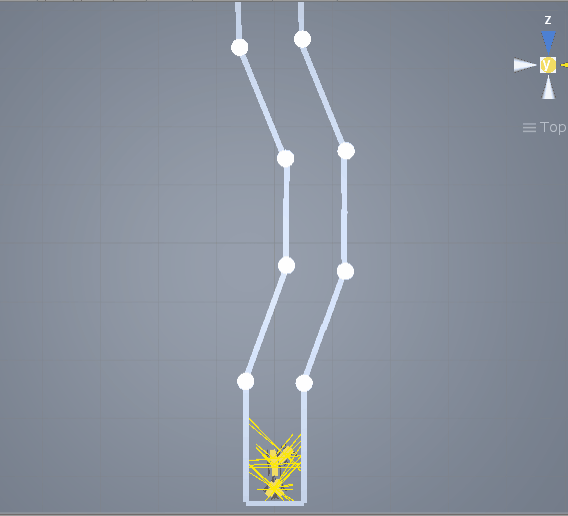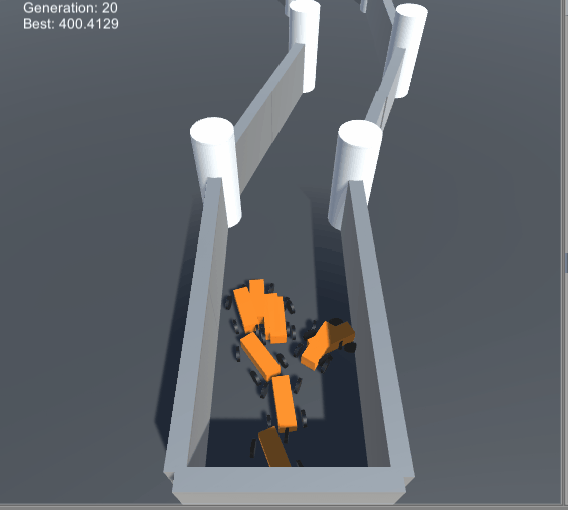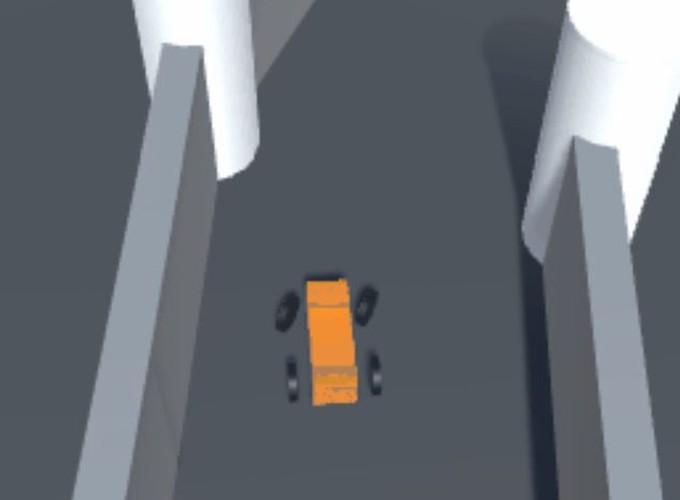This is a project I did to learn about Neural Networks and Genetic Algorithms. We create a neural network to drive a car and then use genetic algorithms to train and find the best weights for the neural network. The network takes in 6 inputs and outputs the acceleration and steering of the car.
Here, we see all the cars beginning to get initialized with a random neural network. They are pretty dumb.

In the editor, this is the information that cars get (as shown by the yellow lines).

By generation 22, we have a car that can finish the whole track (albeit not smoothly)!

On average, it takes about 22 generations to train the neural network fully.
The neural network has 6 input nodes:
- current speed
- distance of closest obstacle from the left side (max 10m)
- distance of closest obstacle from the right side (max 10m)
- distance of closest obstacle from the front (max 10m)
- distance of closest obstacle from the front-left side (max 10m)
- distance of closest obstacle from the front-right side (max 10m)
There is 1 hidden layer, consisting of 5 nodes. There is 1 output layer, consisting of 2 nodes:
- Acceleration (-1 to 1)
- Steering (-1 to 1)
I use tanH as my activation function.
There are 3 main scripts:
- CarController: this is the script for a car. Has a neural network that drives the car.
- CarManager: manager for the population of cars
- NeuralNetwork: holds the neural network code
- GeneticAlgorithmController: performs the selection process of the algorithm The program works as follows:
The input and hidden layer nodes have both a weight and a bias, that is randomly generated for the population of cars (default 10). They are then simulated as generation 1 on the race track. After all the cars crash or 60 seconds, the algorithm chooses the best 2 cars (based on displacement from starting point) and then creates the next generation of cars by combining the best 2 cars genes (randomly selecting between the 2 or a combination thereof). There is an option that allows us to keep the best 2 cars in the next generation or to generate all new cars in the population from the parents (i.e. the parents die). The next generation is then simulated and so on.
